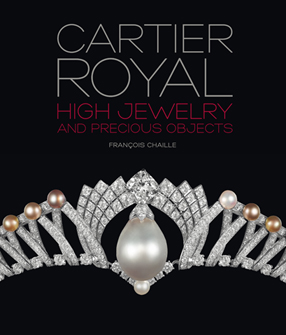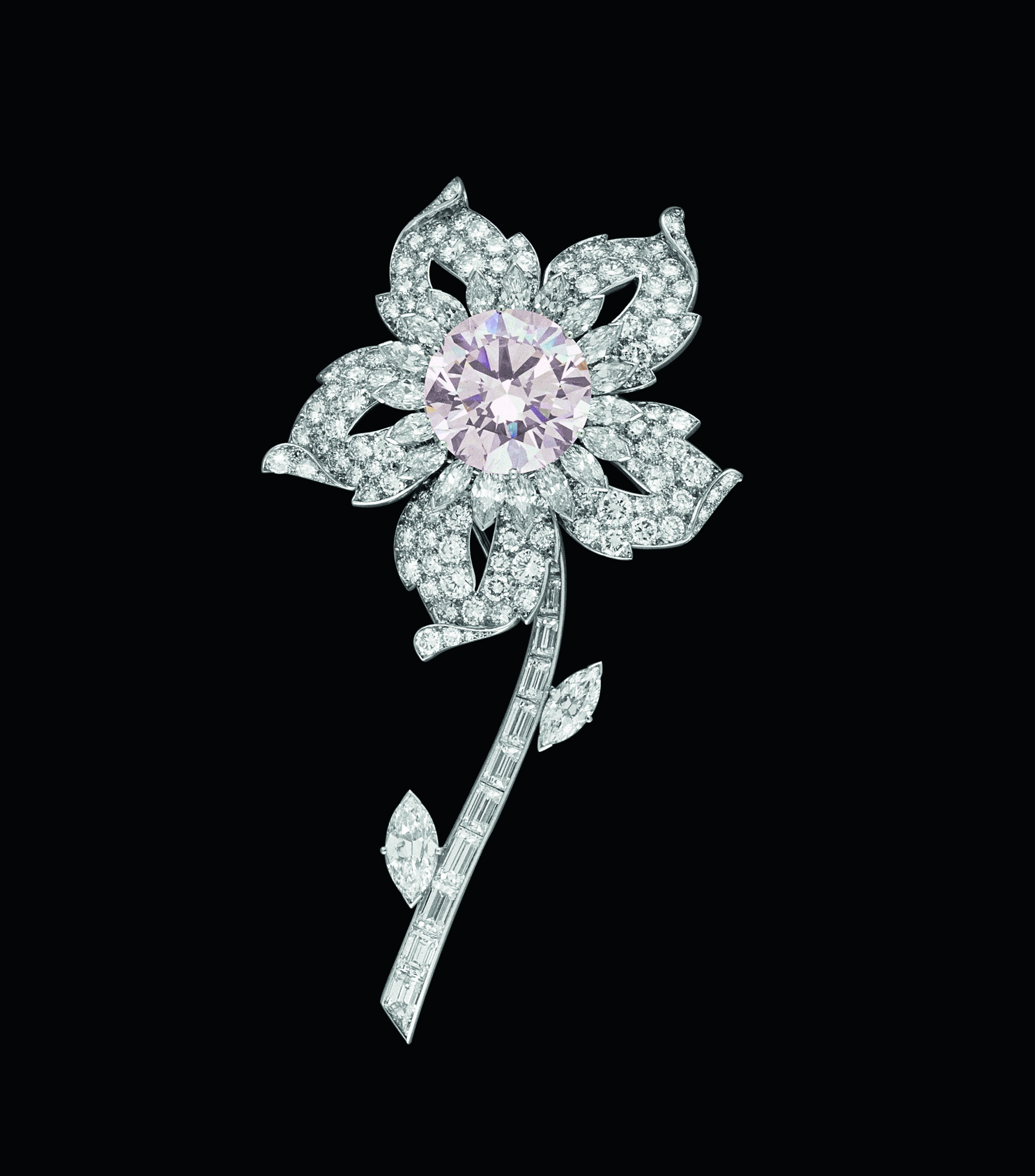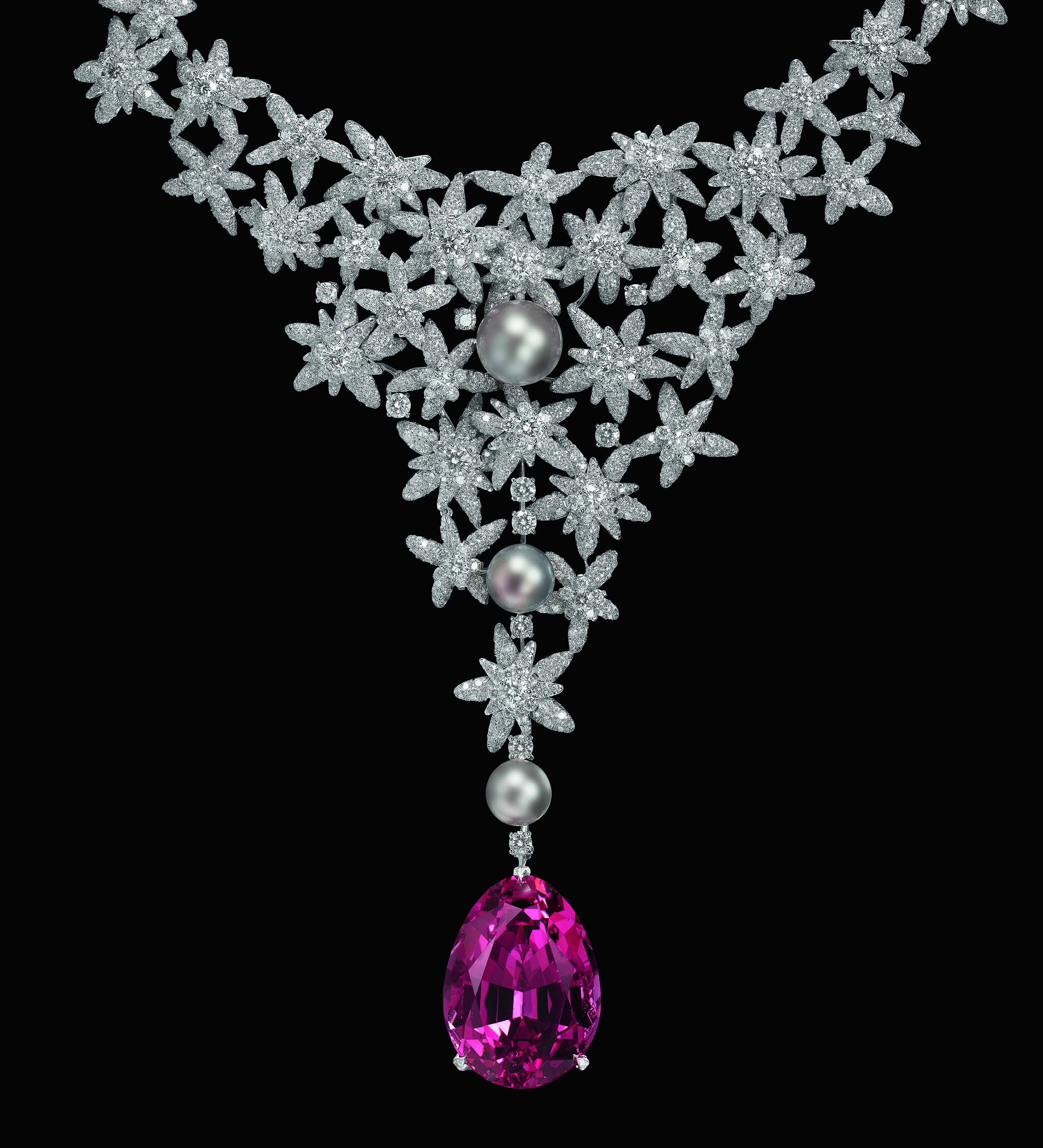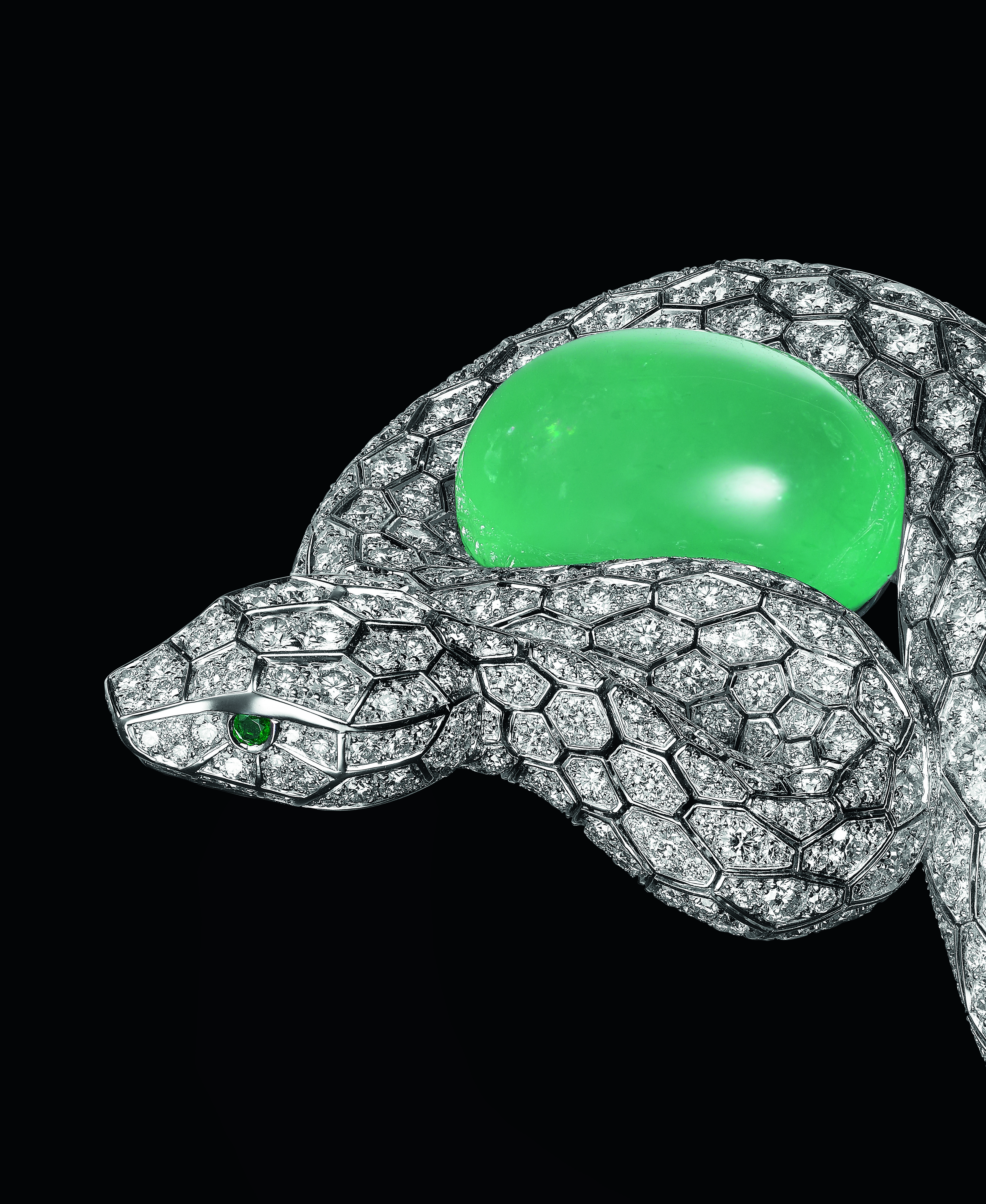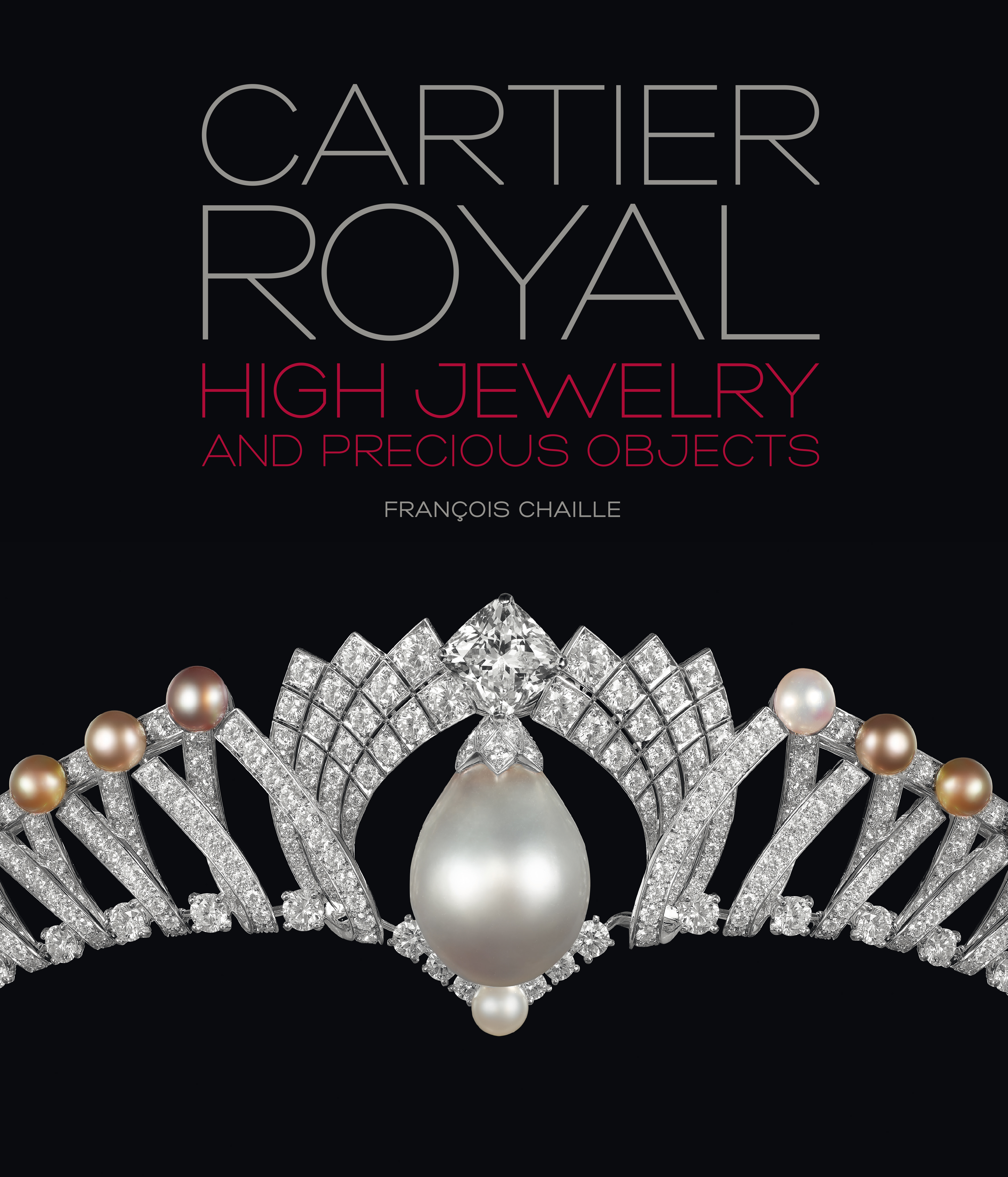CARTIER ROYAL: High Jewelry and Precious Objects
by François Chaille
Publisher: Rizzoli
Cartier Royal is a large format book featuring 175 exceptional Cartier high jewelry and precious objects previously exhibited at 2014’s Biennale des Antiquaires in Paris. If you couldn’t attend this international high jewelry event, this volume more than compensates for missing out. Superbly illustrated and gracefully translated, CARTIER ROYAL captures regal jewels and lavish objects from the Paris-based house so that they can be studied and enjoyed for years to come.
Founded in 1847, the house of Cartier has long served as a jeweler to Kings, Queens, Maharajahs and movie queens like Grace Kelly, Elizabeth Taylor and Maria Felix.
True to its title, CARTIER ROYAL sparkles with images of tiaras and other imperial jewelry worn by Marie, Queen of Romania, Britain’s Queen Elizabeth I, Spain’s Queen Sophia and Queen Elizabeth II. The Halo tiara commissioned by King George VI from Cartier London in 1936 for his wife Queen Elizabeth I is one such royal treasure. Featuring scrollwork and graceful palmettes of platinum-set diamonds, the Halo tiara crowns the Princess Margaret in mid-20th century photos with imperial glamour.
Images from the 2011 royal wedding between Prince William and the Duchess of Cambridge show how well the Halo’s timelessly elegant design complements Kate Middleton’s 21st century wedding gown. The Halo tiara will remain enduringly stylish for years to come; one hopes that the Duchess will don the Halo in 2036 to celebrate the tiara’s 100th anniversary!
Glittering as important benchmarks in jewelry history, many royal jewels and precious objects are reproduced here at actual size. These true-to-life photos make the book an even richer reference, and a more pleasurable read. Including previously unpublished images, CARTIER ROYAL illustrates how by setting ever-higher aesthetic, ornamental, technical, and stylistic standards, Cartier remains a leading designer of high jewelry. The book’s value is intensified by the inclusion of illustrations and historic notations from Cartier’s London, New York and Paris archives.
An essential reference for jewelry lovers, collectors, designers and stylists, CARTIER ROYAL contains six vibrant essays by author and Cartier expert François Chaille. From the outset, Chaille establishes how the aesthetic standards and traditions that founder Louis Cartier forged were gloriously maintained in the 20th century by Jacques Cartier, along with the many gifted artisans in his employ.
“All the creations presented in the book’s last section, ‘Regal Design,’ are significant ones for us,” says Cartier International editor and spokeswoman Sophie Marin. “They are born out of Cartier’s curiosity for pared-down lines, a demanding approach inherited from Louis Cartier.”
Indeed, one of the most intriguing aspects of Cartier’s royal jewelry heritage involves how Cartier has taken important gemstones and transformed them into bejeweled masterpieces for European and Indian royalty. Realizing that Indian male and female rulers had been wearing lavish jewelry for centuries, Jacques Cartier set out to explore the Indian market. In 1911, he journeyed around India meeting with Maharajahs and other local rulers, to whom he also sold gemstones. Many of these rulers then commissioned him to place gems from their antique pieces in enhanced, contemporary Cartier settings.
One of Cartier’s most famous commissions came in the 1920s from India’s Maharajah of Patiala. This involved nearly three thousand white diamonds, some choice rubies, plus the 234.69 De Beers yellow diamond, which is the world’s seventh largest diamond. In 1928, Cartier delivered to the Maharajah a ceremonial bib necklace that is one of history’s most sumptuous and finely crafted. The necklace contained 2,930 diamonds, two large Burmese rubies, and the blazing De Beers diamond. All totaled nearly 1,000 dazzling carats.
Chaille’s other vibrant essays note the dynamic influence of Sergei Dhiagilev’s Ballets Russes productions on Cartier’s vanguard jewels circa 1910 – 1914. Cartier’s design artistry and technical prowess is also explored, along with royal and style-setting clients such as fashion plates Daisy Fellowes and the Duchess of Windsor. Both commissioned some of Cartier’s most creatively daring, chic and gemologically important jewels.
Always inspired by disparate cultures and creatures from the natural world, Cartier is of course stylistically indebted to ancient design motifs of the Middle East, the Far East; the imperial grandeur of Chinese bijoux as well as ancient Indian royal jewels. Sleek, chic Art Deco architecture and sophisticated urban lifestyles also remain compelling Cartier influences. While the graceful allure of leopards and panthers has inspired important Cartier designs for a century, so have flowers such as roses, edelweiss and orchids.
Proving that there is much more to Cartier’s legend than majestically designed pieces blazing with rare gems, CARTIER ROYAL illuminates the house’s unique and powerful commitment to exquisite; labor-intensive craftsmanship. As François Chaille explained to me, the House of Cartier continues to uphold important artisanal traditions that other heritage jewelers of Europe have abandoned.
For example, Cartier is the only jeweler in France with a workshop that engraves and carves hard and precious stones. “By continuing to create precious jewelry and objects that are carved, engraved, inlaid or interwoven,” Chaille notes, “Cartier proudly serves as a conservatoire of crafts that are now threatened.” In order to save such exacting skills from extinction, Cartier’s master artisans train those who will assist, and one day succeed them. As Marin explains in 2015, “There are four craftsmen working at different levels of training or apprenticeship in stone carving and engraving.” One can only hope that the world’s collectors continue to be captivated by the unique beauty and artistry of such objects for years to come so that these stone carving and glyptician skills survive.
Another of Cartier’s highly artistic and labor-intensive specialties covered in CARTIER ROYAL is the realm of mystery watches and mystery clocks. These are so named because their hands appear to float independently, magically keeping time against a transparent dial. There are myriad technical demands involved in making such elegant timepieces. While photos attest to the beauty of the mystery clocks, Chaille makes it clear that another way that Cartier differentiates itself from other heritage jewelers is by annually producing exquisite mystery clocks and complicated mystery watches.
While Chaille has written other books on the house of Cartier, this one is distinguished by its concise illustration of the house’s peerless royal jewelry, objets d’art and high jewelry creations. Chaille’s compelling evocation of Cartier’s unique and enduring contributions to jewelry craftsmanship and gemology adds further value to CARTIER ROYAL. As Chaille told me, “CARTIER ROYAL gives the world’s jewelry lovers multiple insights into how Cartier continues to produce masterpieces of the jeweler’s art in the 21st century.” What’s more, this important volume serves as an invaluable reference, inspiration and book of dreams for contemporary and future jewelers, designers, collectors and students.
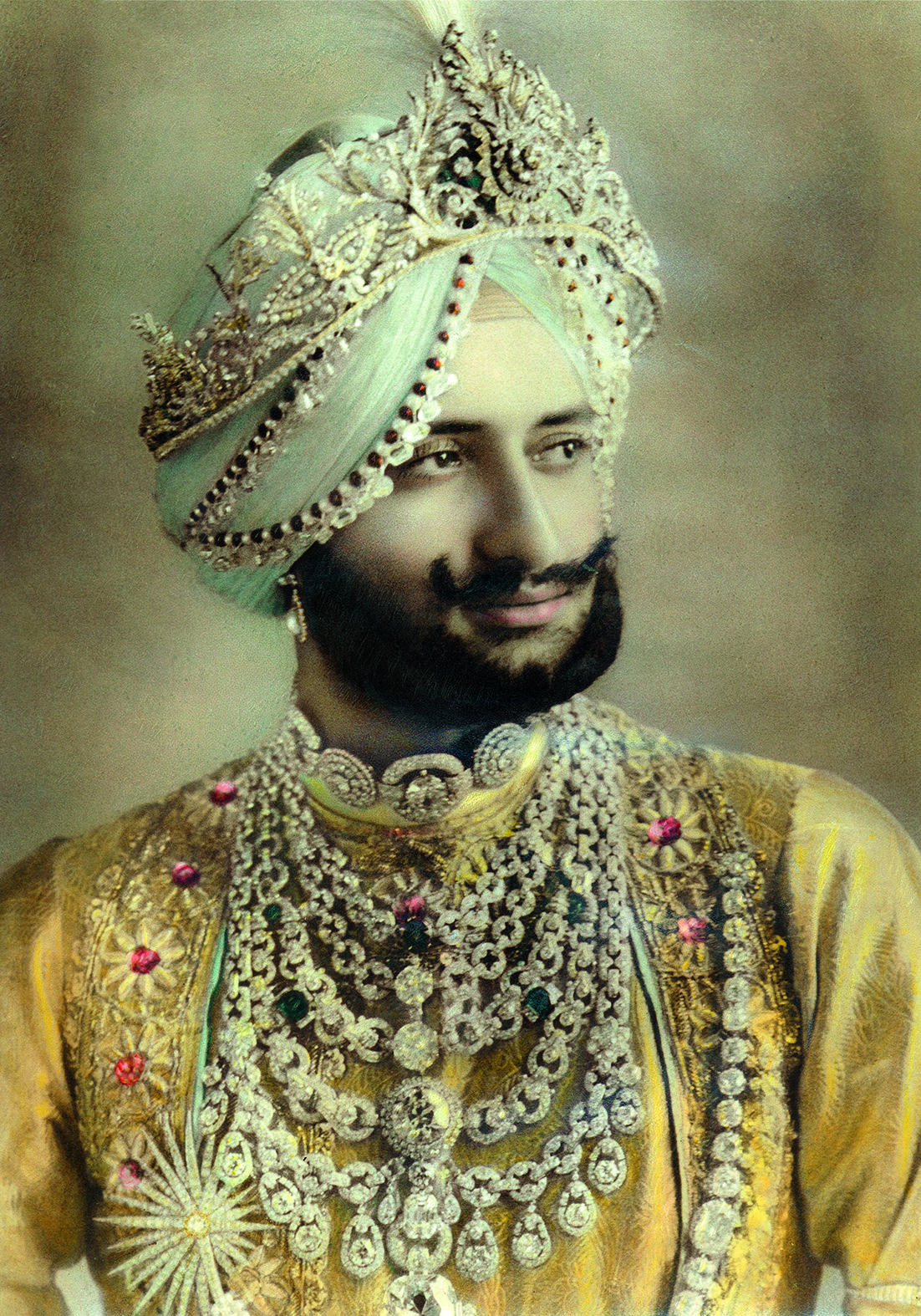
Image courtesy Cartier © Cartier
Maharajah of Patiala
In 1928, Cartier produced a platinum and diamond ceremonial bib necklace for Bhupinder Singh, Maharajah of Patiala. Pictured above, this majestic necklace is worn by the Punjabi potentate’s son, Sir Yadavindra Singh. The bejeweled bib contained 2,930 diamonds, two large Burmese rubies, and the yellow De Beers diamond, which at 234.69 carats, is the world’s seventh largest diamond. All totaled, this necklace contains nearly 1,000 carats. (In 2014, I studied this jewel at the Cartier exhibit in Paris’s Grand Palais: what scintillating stones, and what superb design, gem-cutting and gem-setting!)
Image courtesy Cartier © Cartier
TIARAS
1st Tiara: Scroll tiara by Cartier Paris, special order in 1902. Sold to the Countess of Essex. Comprised of silver and gold, cushion-shaped diamonds, round old European-cut diamonds, and rose-cut diamonds in a millegrain setting.
2nd Tiara: This platinum tiara is inspired by a kokoshnik (traditional Russian headdress). It was created by Cartier Paris in 1908 and contains 15 pear-shaped diamonds totaling approximately 19 carats, round old European-cut diamonds and natural pearls, with a muguet (lily) setting for the dangling, pear-shaped diamonds.
3rd Tiara: This platinum tiara is inspired by a kokoshnik (traditional Russian headdress) and was a 1911 special order made by Cartier Paris. The round old European-single and rose-cut diamonds are in a millegrain setting.
4th: Platinum headband made by Cartier Paris in 1923. Comprised of cushion-shaped and round old European-cut diamonds. Part of the headband detaches to form two bracelets!
Image courtesy Cartier © Cartier
Queen Elizabeth II Flower Brooch
Resembling the alpine edelweiss flower, this brooch is centered with a superb quality pink diamond of 23.60 carats. This regal diamond is named the Williamson, after the geologist who discovered it in Tanzania and gave it to Queen Elizabeth. She commissioned Cartier to make it into a brooch in 1953, the year of her coronation. White diamonds form the stem and leaves. Because pink diamonds of this weight, color and clarity are extremely rare, the Williamson is exceedingly valuable.
Image courtesy Cartier © Cartier
Pamir Necklace
This Cartier necklace of 18K white gold took two years to design and fabricate. It contains one 49.74-carat pear-shaped spinel from Tajikistan, natural pearls and brilliant-cut diamonds. The spinel can be removed.
Image courtesy Cartier © Cartier
Reine Makéda Necklace
Made of platinum, this Cartier stunner debuted at the 2014 Biennale des Antiquaires. It is centered with a 15.29 carat, elongated oval ruby from Mozambique. This is complemented by a 3.51 carat D Internally Flawless rose-cut diamond, one 5.10 carat E VS2 pear-shaped, rose-cut diamond; cabochon-cut and faceted ruby beads, pear-shaped rose-cut diamonds, calibre-cut diamonds, and brilliant cut diamonds. The ruby choker and the diamond necklace can be detached from one another and worn separately.
Image courtesy Cartier © Cartier
Cartier Serpent Bracelet
A luscious 53.78 carat, cabochon-cut emerald from Brazil is set in this platinum bracelet. Emerald eyes and brilliant cut diamonds adorn this superb example of Cartier haute joaillerie.
Click here to buy CARTIER ROYAL now!

